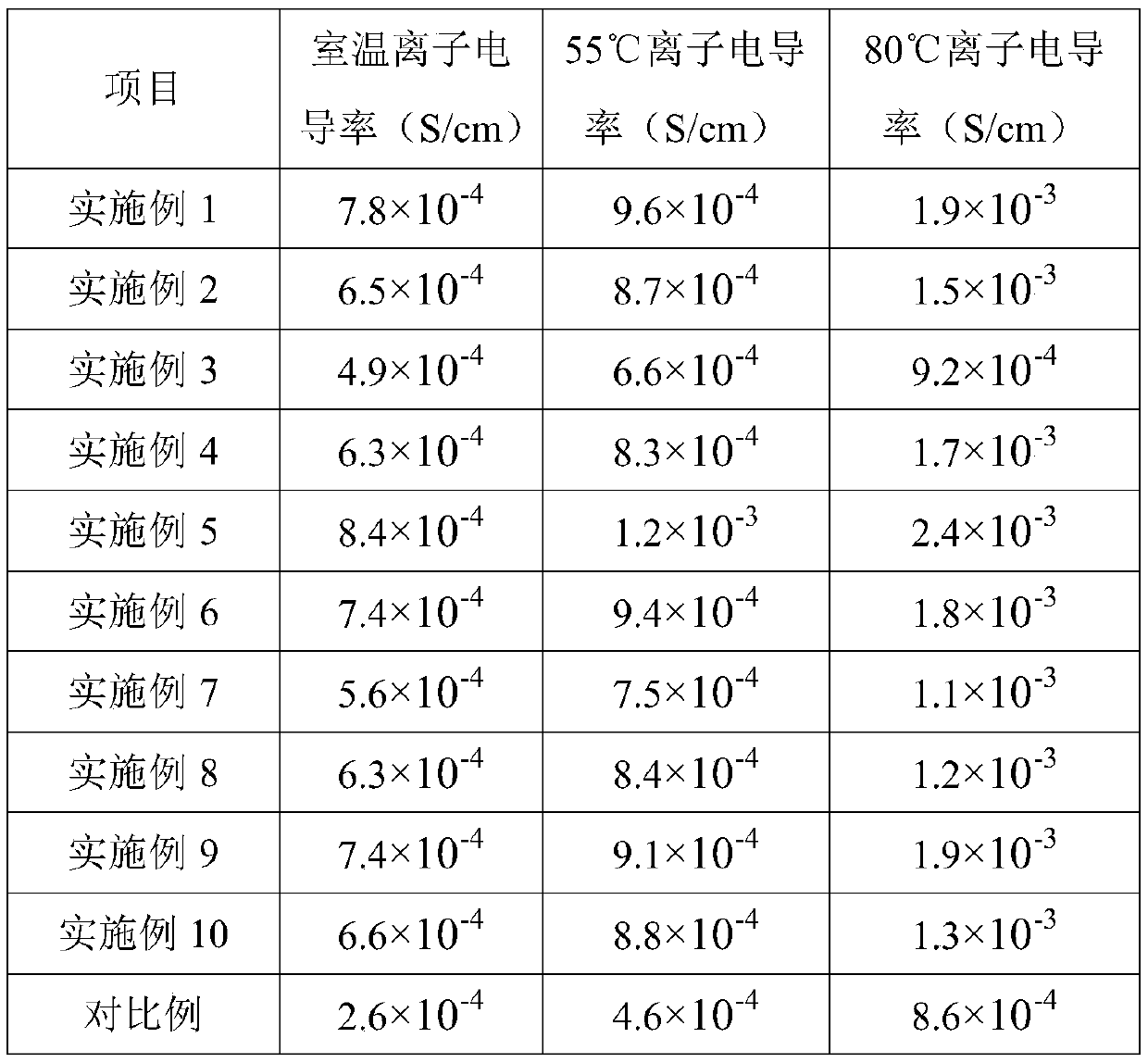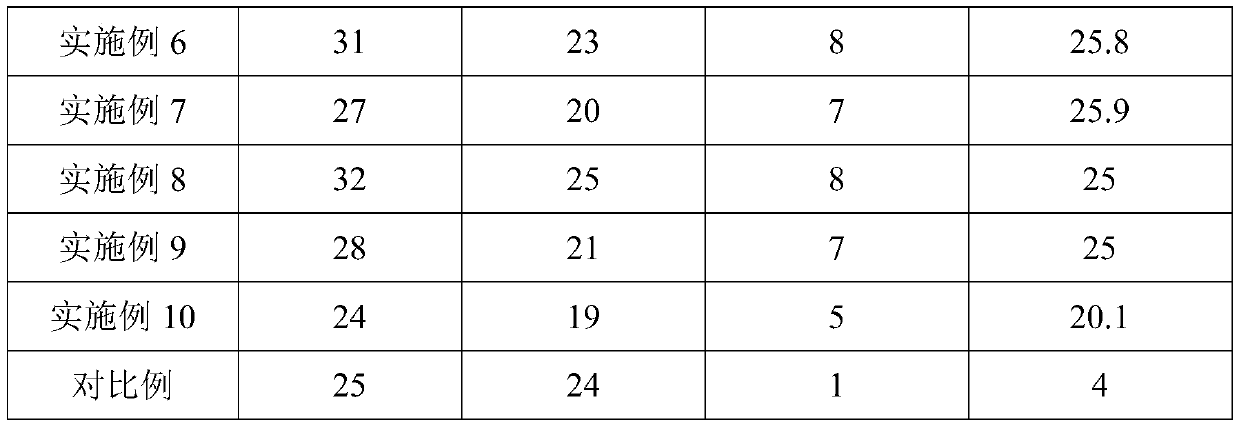Biodegradable composite polymer electrolyte for lithium battery and preparation method thereof
A composite polymer and biodegradation technology, applied in the field of composite polymer electrolyte and its preparation, can solve the problem of polymer refractory degradation, and achieve the effects of simple and easy process, high electrical conductivity and mechanical strength, and fast degradation.
- Summary
- Abstract
- Description
- Claims
- Application Information
AI Technical Summary
Problems solved by technology
Method used
Image
Examples
Embodiment 1
[0036] The biodegradable composite polymer electrolyte used in the lithium battery of this embodiment is made of the following parts by weight of raw materials: 0.35g copolymer of butylene adipate and butylene terephthalate, 0.15g polypropylene Nitrile, 0.2g lithium bistrifluoromethanesulfonimide, 0.3g aluminum oxide particles.
[0037] The method for preparing the above-mentioned biodegradable composite polymer electrolyte for lithium batteries includes the following steps:
[0038] 1) Under the protection of argon, weigh 0.35g of the copolymer of butanediol adipate and butylene terephthalate (PBAT) into 10ml of azadrine, heating and stirring at 70°C After 2h, add 0.15g polyacrylonitrile after fully dissolving, continue to stir for 2h, fully dissolve, obtain solution A;
[0039] 2) Under the protection of argon, weigh 0.2g of lithium bistrifluoromethanesulfonimide into solution A, stir at 70°C for 2h to obtain solution B;
[0040] 3) Under the protection of argon, weigh 0.3 g of alu...
Embodiment 2
[0044] The biodegradable composite polymer electrolyte used in the lithium battery of this embodiment is made of the following parts by weight of raw materials: 0.6g of copolymer of butylene adipate and butylene terephthalate, 0.2g of polyethylene Methyl acrylate, 0.03g lithium bistrifluoromethanesulfonimide, 0.17g aluminum oxide particles.
[0045] The method for preparing the above-mentioned biodegradable composite polymer electrolyte for lithium batteries includes the following steps:
[0046] 1) Under the protection of argon, weigh 0.6g of the copolymer of butylene adipate and butylene terephthalate (PBAT) into 10ml of azadrine, heating and stirring at 40°C After 3h, after fully dissolving, add 0.2g of polymethyl methacrylate, continue to stir for 3h, fully dissolve, and obtain solution A;
[0047] 2) Under the protection of argon, weigh 0.03g of lithium bistrifluoromethanesulfonimide into solution A, stir at 40°C for 0.5h to obtain solution B;
[0048] 3) Under the protection of...
Embodiment 3
[0052] The biodegradable composite polymer electrolyte used in the lithium battery of this embodiment is made of the following parts by weight of raw materials: 0.35 g of a copolymer of butylene adipate and butylene terephthalate (PBAT), 0.5 g polyvinylidene fluoride, 0.14g lithium bistrifluoromethanesulfonimide, 0.01g aluminum oxide particles.
[0053] The method for preparing the above-mentioned biodegradable composite polymer electrolyte for lithium batteries includes the following steps:
[0054] 1) Under the protection of argon, weigh 0.35g of the copolymer of butanediol adipate and butylene terephthalate (PBAT) into 10ml of azadrine, heating and stirring at 70°C 2.5h, after fully dissolving, add 0.5g polyvinylidene fluoride, continue to stir for 2h, fully dissolve, and obtain solution A;
[0055] 2) Under the protection of argon, weigh 0.14g of lithium bistrifluoromethanesulfonimide into solution A, stir at 70°C for 2h to obtain solution B;
[0056] 3) Under the protection of a...
PUM
| Property | Measurement | Unit |
|---|---|---|
| melting point | aaaaa | aaaaa |
| crystallinity | aaaaa | aaaaa |
Abstract
Description
Claims
Application Information
 Login to View More
Login to View More - R&D
- Intellectual Property
- Life Sciences
- Materials
- Tech Scout
- Unparalleled Data Quality
- Higher Quality Content
- 60% Fewer Hallucinations
Browse by: Latest US Patents, China's latest patents, Technical Efficacy Thesaurus, Application Domain, Technology Topic, Popular Technical Reports.
© 2025 PatSnap. All rights reserved.Legal|Privacy policy|Modern Slavery Act Transparency Statement|Sitemap|About US| Contact US: help@patsnap.com



